Fringed tulips: characteristics and best varieties
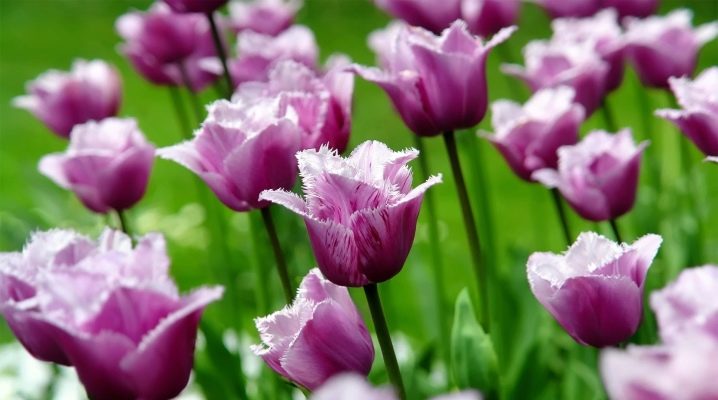
With the onset of spring, one of the early flowering plants - tulips - is gaining color in the gardens. Buds of various shapes, sizes and colors delight the eye with their diversity and beauty. Breeders have created many types of tulips, differing in the shape of the glass or flower petals. Flowers with petals with a fringed edge look very decorative.

Description
Among the wide variety of tulips, there is a small group of varieties, allocated in a separate class: Fringed. The presence of fragile openwork needles of various lengths, located in disorder at the edges of the petals, is a distinctive feature of this class. The first variety with characteristic petals was registered in the 30th year of the last century under the name "Sandyu", which translates as sundew, for its similarity to the behavior of a predatory flower. Fringed tulips were singled out as a separate group in 81 of the twentieth century.
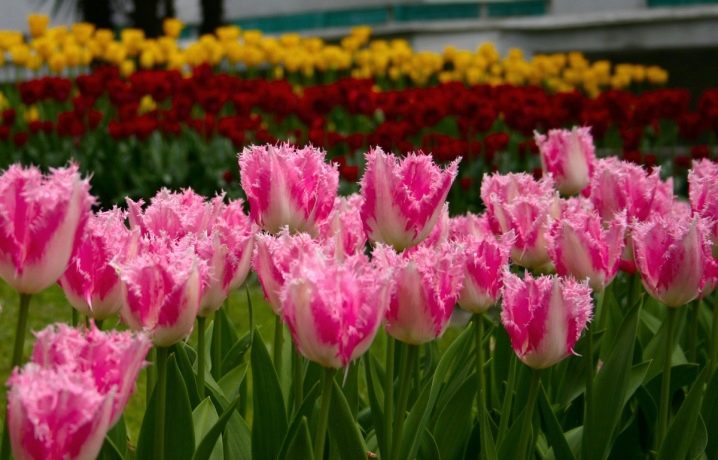
Today there are more than 54 varieties of tulips belonging to the Fringed class. Among them there are early, medium and late flowering species, as well as suitable for forcing indoors. The beauty of the flowers is provided not only by the lace fringe, but also by the variety of forms of the flower glass, color and the number of petals. There are simple and double types with glass-shaped buds and lily flowers.

Fringed tulips contain all the colors and shades characteristic of these plants, except for black ones. Among the different varieties, there are flowers with monochromatic buds ranging from pure white to dark purple, and tulips, which have several colors and shades in the palette at the same time. Fringed hybrids inherit all the qualities of the parent varieties and are more resistant to weathering due to the denser structure of the petals.
Due to the stiffness of the flower leaves, they retain the shape of the bud for a long time and are ideal for creating bouquets, combining well with simple late tulips, especially black shades.
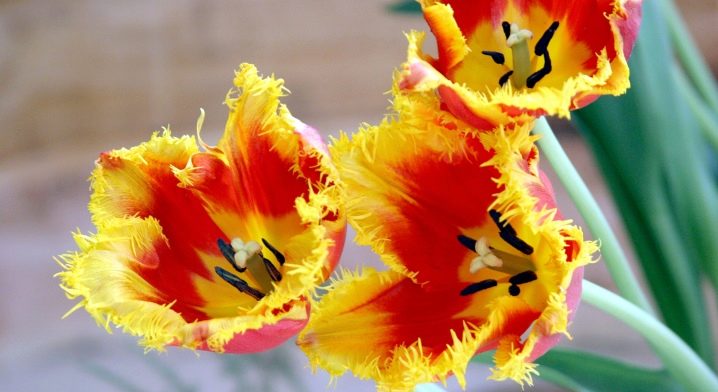
Varietal varieties
Although the number of bred varieties of fringed tulips is small compared to other groups, the beauty of the flower leaves no one indifferent. Among the variety of varieties, everyone will find their favorite species.
Simple or double, they are all delightful and make you want to touch the petals to make sure they are real flowers.


Simple
Simple tulips have a total of 6 fringed petals.
- Snow white variety Daytona resembles swan wings. Low, only 400 mm, super-fringed flower with a glass of 70–90 mm is suitable for cutting and decorating flower beds.
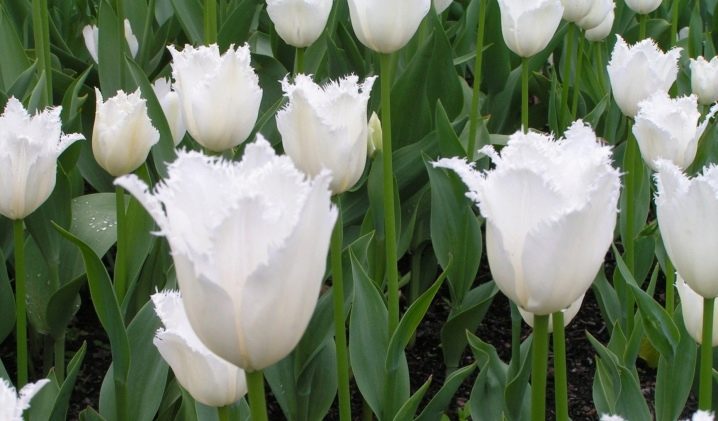
- Snow-white hoarfrost fringes along the edge of red petals adorns the tulip "Canasta"... Late-flowering plants about half a meter tall look good in planting in groups of 8-12 and are suitable for cutting.

- Red-orange with a thick yellow needle-like fringe on the outside and saffron yellow with a canary-colored bottom in a greenish edging inside, tulip "Lambada" resembles a dancing flame. The plant is 600 mm tall with a 70 mm glass-shaped bud and is a late-flowering plant ideal for cutting.
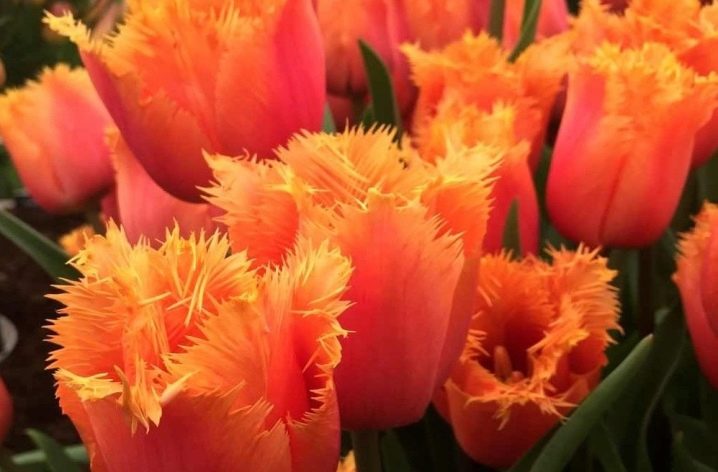
- The most original variety Barbados differs in the presence of a fringe 3 mm long, not only along the edge, but also along the entire outer side of the crimson petals.
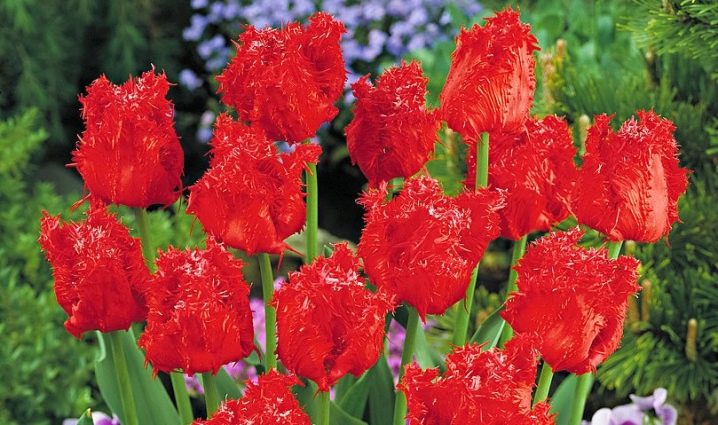
- Davenport beautiful yellow fringe, crowning fiery red petals.

- Arma - the shortest variety, has a delicate aroma and a red bud with a scarlet fringe.
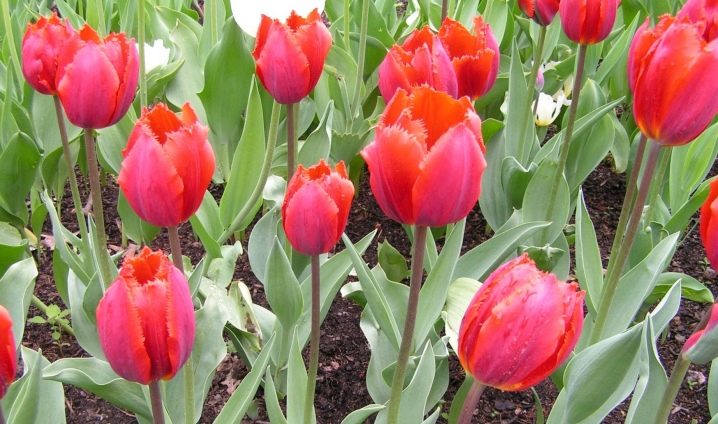
- Purple flower with matching fringes Cuban night looks austere and elegant.

- Hamilton has a yellow glass with a fringe of the same color, bringing bright colors of autumn to the spring riot of colors.

Fringed
A large number of fringed petals in terry varieties delight those who have seen this splendor, leaving an unforgettable impression. Any varieties of fringed tulips deserve attention and will be appreciated by those around them.
- "Vaya con dios" has a delightful yellow color with irregular red stripes. The diameter of a double bud reaches 150 mm, and the plant height is about 50 cm.
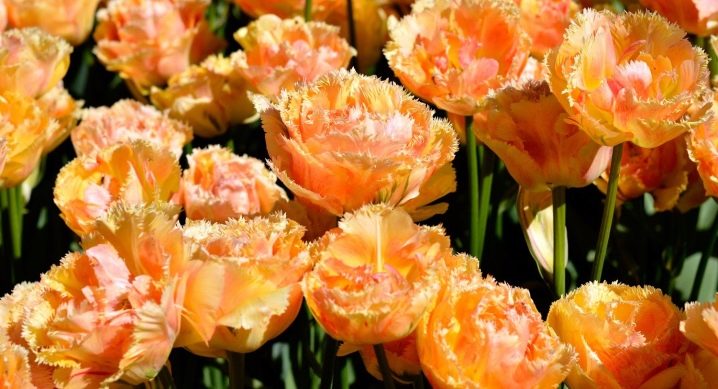
- Variety Artichoke similar to "Vaya condios", only it has much fewer red spots.
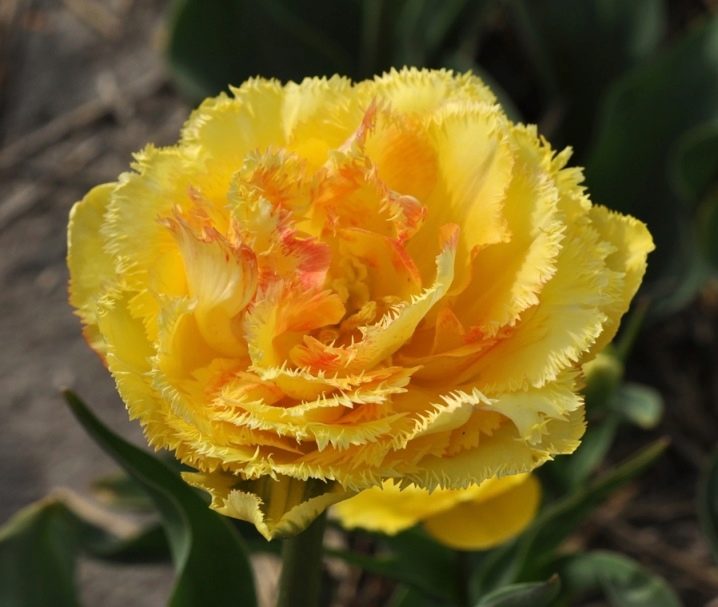
- Snow crystal - a snow-white variety with greenish lower petals, looks like ice cream on a green plate.
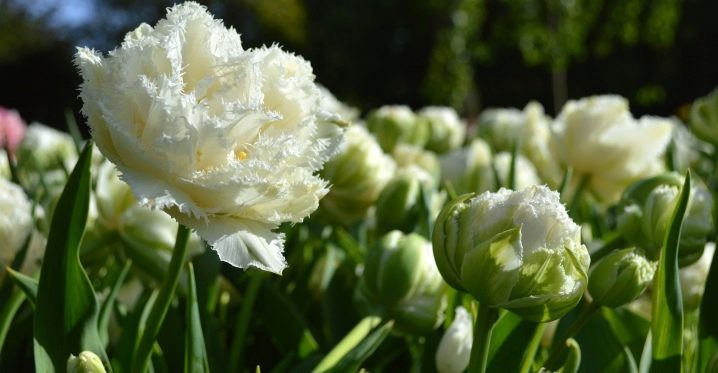
- The unique charm of a pink variety with a wide white border Queensland boggles the imagination. With a plant height of about 350 mm, the flower diameter reaches 130 mm.
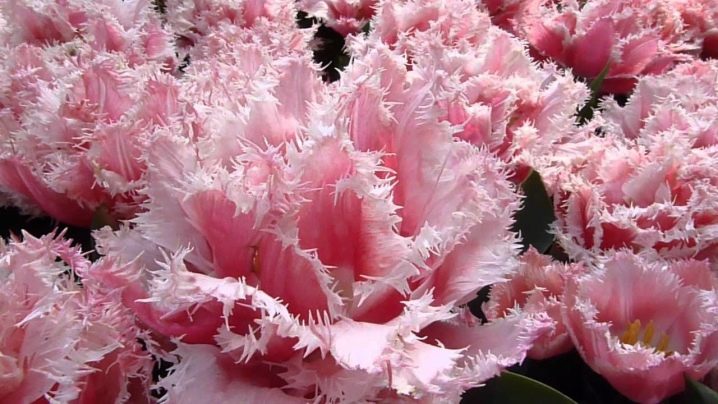
- Cool crystal captivates with a rich pink color surrounded by pale pink, almost white fringes. Large buds up to 120 mm in height have a delicate pleasant aroma.
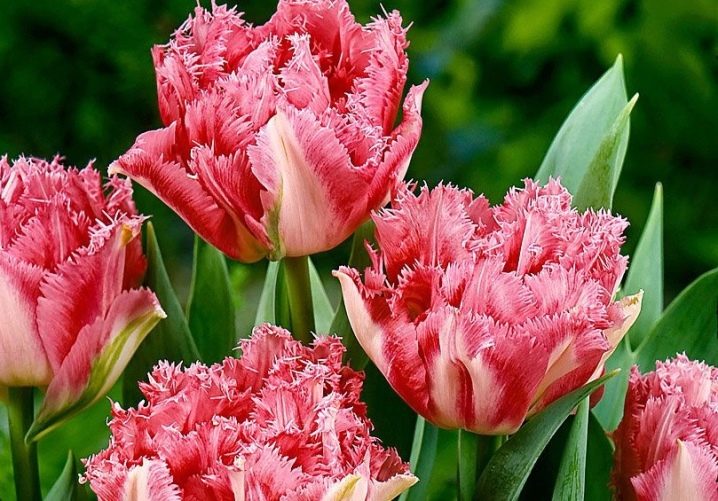
- Sunny yellow Mon amour with a flower diameter of up to 120 mm, it truly embodies the love that illuminates everything around. A large glass of a flower has a delicious aroma.
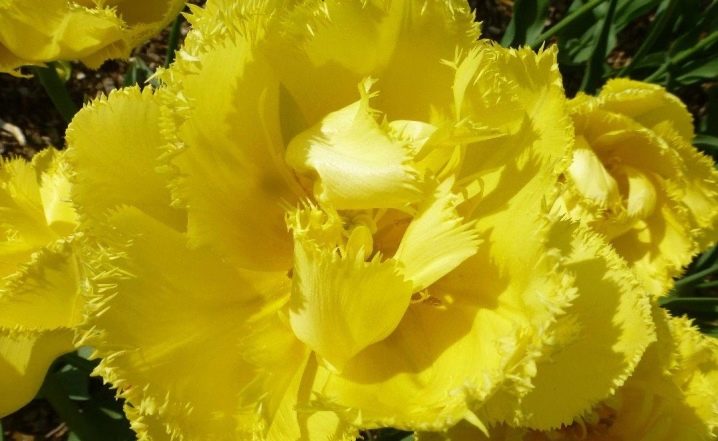
- Sensual touch in its bloom resembles a salmon-colored peony with yellow fringes and greenish veins on the outside of the petals.
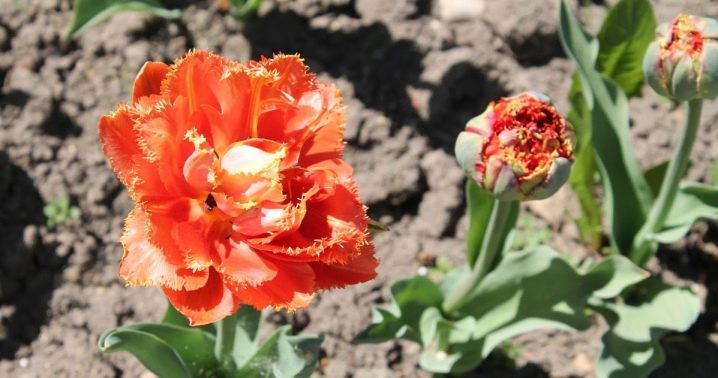
- Tulip "Mascotte" has many dark pink petals, as if dusted with whitish hoarfrost. A small bud 50–70 mm in diameter sits on a strong peduncle up to 400 mm in height.

Agrotechnics
To see all the splendor of fringed tulips at the time of flowering, the plant must be properly looked after.
- Tulips grow on any fairly loose neutral soil. If the soil is clay, then sand is added to the soil before planting. The acidic soil is neutralized with slaked lime 2 years before planting tulip bulbs.

- Planting and replanting of bulbs takes place in the autumn, when the soil temperature drops to 9 ° C at a depth of 100 mm. Large bulbs are buried by 180-200 mm, small ones - by 80-120 mm. Simple tulips can be replanted every 2-3 years, while terry varieties require a yearly change of location.
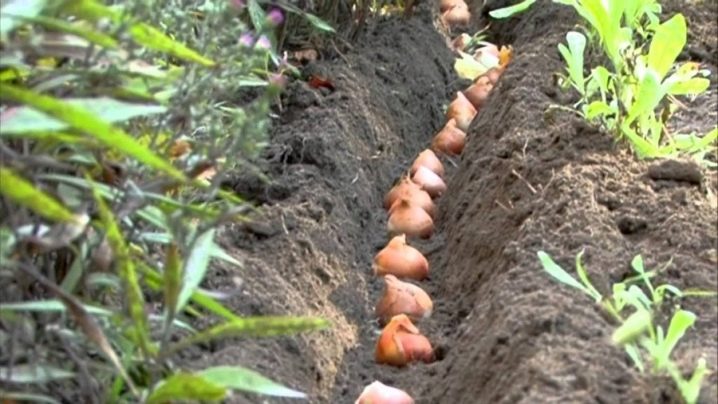
- It can be planted in groups of different varieties to decorate the garden or in rows of the same species if the plants are planned for reproduction. Depending on the size of the planting material, the distance between plants is 50–100 mm, and between rows 0.2–0.3 m.
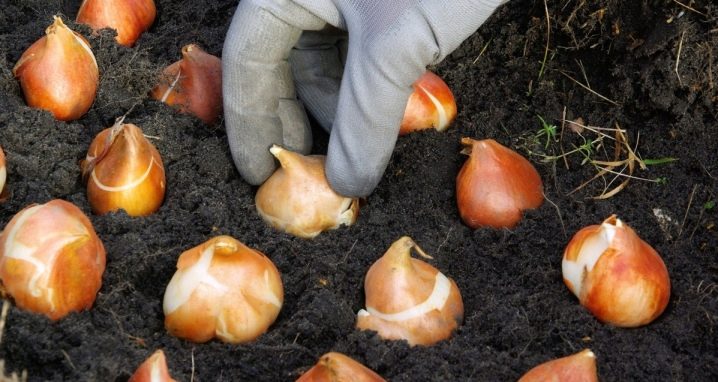
- In order for the tulip to please with lush flowering, it needs fertilizing with mineral fertilizers 3-4 times during the growing season. The very first feeding is done on melting snow. Then - when sprouts appear, the next one - at the moment of bud formation. The latter is carried out at the end of flowering. For feeding, you can use ready-made universal fertilizer "Kemira Universal-2", you should avoid fresh organic fertilizers, for example, not rotted manure.
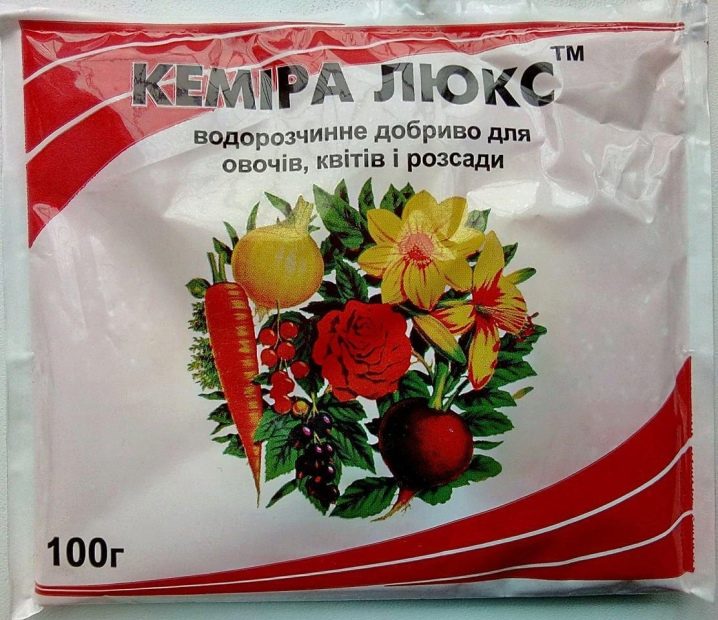
- When the leaves of the plant begin to turn yellow, the bulbs are dug up, sorted and dried in the shade at a temperature of about 30 °. For fringed varieties, drying speed is important: the sooner the bulbs dry out, the less likely it is to be affected by fungal diseases.

- Sorted the bulbs are stored at a temperature of about 16 ° in a dry, dark place.

You can watch an overview of terry and terry-fringed tulips in the video below.







































































































The comment was sent successfully.